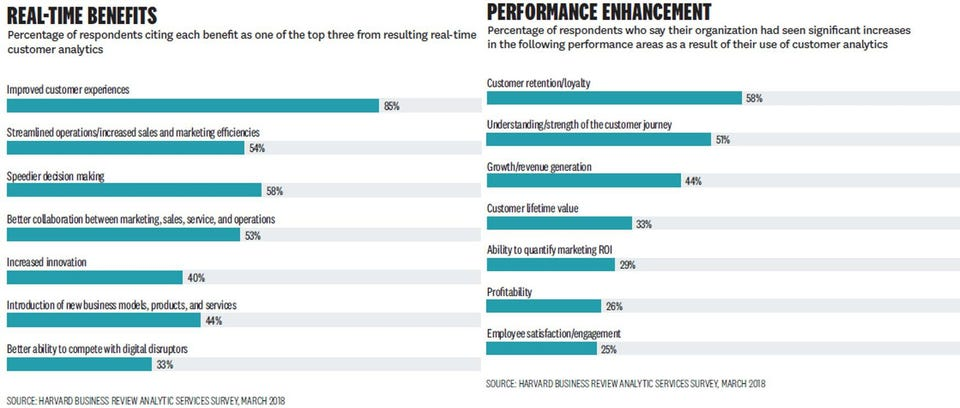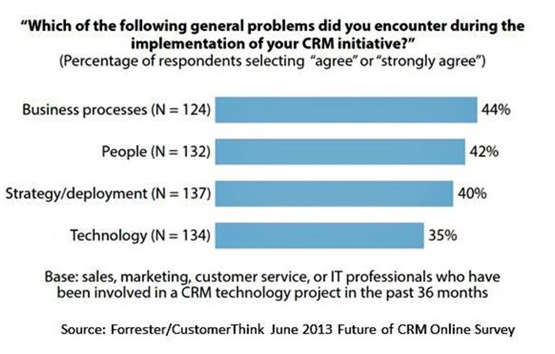45 CRM Statistics You Need to Know in 2026
Quick summary:
Our article delves into the stats that define CRM's role in modern business, covering sales performance, user adoption, customer retention, and productivity improvements. With data on AI, mobile CRM, and user efficiency, these figures help you evaluate CRM’s impact on your business and guide smarter, more strategic decisions for growth.
Since you came here looking for stats, here’s one for you. Even in 2026, 22% of sales professionals are still unsure about what CRM actually is.
CRM, or Customer Relationship Management, is more than just a tool for managing contacts—it drives sales, streamlines operations, and boosts customer satisfaction.
In this guide, you’ll discover key CRM stats that reveal how these systems are shaping business growth. Whether you’re assessing ROI, benchmarking performance, or exploring adoption trends, these insights will give you the data you need to make smarter, more strategic decisions about your CRM investment.
Here’s What You Need to Know About CRM If You’re Among Those 22%
Not sure what is CRM? Well, here are some basics.
A CRM is much more than a digital address book. It organizes customer data, tracks sales, and streamlines your team’s workflow. Using CRMs to autoate tasks like follow-ups and centralizing communication saves time and reduces errors. For you, this means stronger customer relationships, more closed deals, and less manual work.
Whether you’re a startup or an enterprise, a CRM is essential for personalizing customer experiences, driving sales, and scaling efficiently.
45 CRM statistics & facts you need to know in 2026
CRM adoption rate statistics
To make the most of these CRM adoption stats, businesses should focus on integrating generative AI tools like chatbots and predictive analytics, as companies using AI in CRM are more likely to exceed sales goals. Additionally, with the rise of mobile CRM and the fact that 70% of businesses use it to enhance their sales strategies, adopting a mobile-friendly CRM platform can give your sales reps a competitive edge.
- The CRM market is projected to grow by 12% annually through 2028, with the market expected to reach $129 billion by then.
- 51% of businesses identify generative AI (chatbots, predictive analytics, content creation) as the top CRM trend for 2024.
- 65% of businesses have already adopted CRM systems with generative AI.
- Businesses using generative AI in their CRM are 83% more likely to exceed sales goals.
- 34% of businesses using generative AI report exceptional customer service compared to those that don’t.
- 70% of businesses use mobile CRM systems to enhance their sales strategies.
- Businesses leveraging mobile CRM platforms are 150% more likely to exceed their sales goals, showing the growing importance of mobility in CRM strategies.
- 74% of businesses in the United States have implemented a CRM system to manage their customer interactions effectively.
Benefits of Using CRM
To fully capitalize on CRM’s benefits, focus on features that improve customer relationships, streamline sales processes, and enhance team collaboration. Implementing AI-driven analytics and automation tools will reduce manual tasks, freeing up time for higher-value activities. Ensure team training and integration to maximize CRM’s potential for boosting efficiency and customer satisfaction.
- Studies show that 57% of businesses report increased sales revenue as a key benefit of CRM software.
- 53% of businesses experience improved customer satisfaction and retention with CRM tools.
- 49% note enhanced customer service and support quality as a significant advantage.
- 97% of businesses that use a CRM system met or exceeded their sales goals in the past year, and only 3% fell short. Moreover, businesses that use a CRM are 86% more likely to exceed their sales goals than those that don’t.
- On average, businesses can expect an return on investment (ROI) of $8.71 for every $1 spent on sales CRM software, reflecting a significant return on investment.
- AI-driven CRM solutions are projected to generate over $1.1 trillion in revenue, as estimated by Salesforce.
- 85% of CRM users in the USA identified improved customer experience as the top benefit of using CRM analytics, according to a 2018 Statista study.
- Other notable benefits include faster decision-making (58%), streamlined operations (54%), and better collaboration across departments (53%).
- 91% of businesses report a reduction in customer acquisition costs (CAC) after implementing CRM software, with nearly half experiencing cost savings between 11% and 20%.
- Businesses using a CRM platform can see their revenue increase by up to 245%, making it a powerful tool for driving sales and boosting profitability.

CRM Statistics on Sales Performance
To improve sales performance with CRM, focus on optimizing mobile CRM tools and automation to boost lead conversion and sales productivity. Use CRM to enhance sales forecasting accuracy and shorten sales cycles, enabling your team to hit quotas more consistently. CRM will help you better understand your audience, reduce lead costs, and streamline workflows. Prioritize features that help your sales team close deals faster and manage customer relationships more effectively.
- 65% of salespeople using mobile CRM meet their sales quotas, compared to only 22% who don’t.
- After implementing a CRM, businesses see an average 29% increase in sales revenue and a 34% boost in sales productivity.
- 34% of businesses find that CRM systems shorten their average sales cycle by 8 to 14 days.
- When businesses use a CRM, lead cost can reduce by as much as 23%.
- Companies that implemented CRM technology noticed up to 42% improvement in sales forecasting accuracy.
- CRM software can boost conversion rates by up to 300%, helping businesses generate more leads and sales by better understanding their audience.
CRM Users & Usage Statistics
To make the most of CRM usage, focus on automating repetitive tasks to free up time for more valuable work. Ensure that customer data is centralized and accessible to improve communication and streamline workflows. Regularly review CRM effectiveness in lead generation and customer satisfaction to maintain productivity gains and shorten sales cycles.
- 91% of companies with 10 or more employees now use CRM software
- Sales teams spend 18% of their time using CRM applications, with most of their focus on customer acquisition and sales rather than administrative tasks.
- 32% of CRM usage focuses on lead generation and improving customer satisfaction, making sales the largest application of CRM software.
- 94% of businesses report a surge in sales productivity after adopting a CRM platform.
- 44% of businesses experienced a productivity increase ranging from 10% to 29%.
- 43% of businesses report that CRM software reduces employee workload by 5 to 10 hours per week.
- 50% of respondents say this time is saved by automating repetitive tasks.
- 46% of businesses find CRM software helpful in centralizing customer data for easy access.
- 41% report that CRM streamlines communication with prospects and customers.
CRM Statistics on Customer Engagement
To boost customer engagement with CRM, focus on using data to personalize interactions, especially in email campaigns, which see higher engagement rates. Improve customer service efficiency by automating support tasks and tracking interactions in real-time. Prioritize customer retention strategies, as businesses using CRM see a significant rise in customer satisfaction and retention, which leads to more repeat purchases and long-term loyalty.
- Companies using CRM tools see a 27% increase in customer retention.
- Personalized email campaigns based on CRM data have a 14% higher click-through rate than non-personalized ones.
- 47% of businesses report improved customer service efficiency after adopting CRM.
- 75% of organizations using CRM have experienced significant improvements in customer satisfaction.
- 94% of customers are likely to make repeat purchases from the same source.
Statistics on CRM barriers to entry and use challenges
To overcome CRM barriers, prioritize comprehensive training and ongoing user support, as lack of training is the top implementation challenge. Focus on manual data entry automation to reduce user frustration and improve adoption rates. Ensure your CRM integrates well with other business tools and has a clear strategy for deployment to avoid technical and strategy-related obstacles. Start small with essential features and gradually scale, allowing teams to adapt smoothly and avoid overwhelming complexity.
- Less than 40% of companies fully implement CRM systems.
- 25% of businesses identify training and user adoption as the biggest challenges in CRM implementation.
- 42% of businesses cite lack of training or CRM experts as the biggest barrier, with other challenges being technology (35%) and strategy/deployment issues (40%).
- 23% of users face issues with manual data entry, while 17% struggle with tool integration.
- Only 7% of CRM users find tool complexity to be a major problem. Concerns around cost, usability, and missing features are less significant to users as well.
- Other common issues CRM users come across include lack of sales funnel tracking and bad data.

How to use these CRM research figures: Our conclusion
There are other online resources that serve up a trove of CRM research and statistics (like Capterra). Still, we’ve done the work of reviewing and comparing them all to give you the most robust rundown of some key CRM stats when it comes to CRM adoption rates, CRM growth, CRM revenue, and more.
The CRM stats we’ve covered offer clear, data-backed insights you can use to improve your business strategy. Use these figures to assess whether your current CRM setup is driving the results you want—whether it’s boosting customer retention, improving sales forecasting, or streamlining workflows.
If you haven’t implemented a CRM yet, now is the time to evaluate your needs and find a solution that fits your business. By leveraging CRM data, you can make informed decisions that lead to higher efficiency, better customer relationships, and ultimately, increased revenue.
Methodology
To ensure accuracy and relevance, we conducted thorough research using a variety of sources, including industry reports, surveys, and articles from trusted platforms. We analyzed recent studies, such as those from Salesforce, Statista, and HubSpot, and selected the data most relevant to our audience—businesses seeking to understand how CRM systems can drive growth and efficiency.
This article distills key insights from multiple sources, providing valuable, up-to-date CRM statistics that reflect current trends and future projections in the CRM industry.
On CRM adoption rate statistics
- https://www.fortunebusinessinsights.com/customer-relationship-management-crm-market-103418
- https://www.statista.com/statistics/294537/customer-relationship-management-crm-software-revenue-worldwid/
- https://www.forbes.com/sites/bobevans1/2017/05/23/in-marc-benioffs-race-to-20-billion-these-4-engines-are-driving-salesforces-growth-cloud-wars/?sh=78ff139c7781
On benefits to companies that use CRM statistics
- https://nucleusresearch.com/wp-content/uploads/2018/05/o128-CRM-pays-back-8.71-for-every-dollar-spent.pdf
- https://www.zdnet.com/article/ai-will-create-800000-jobs-and-1-1-trillion-revenue-by-2021-salesforce/
- https://www.statista.com/statistics/880600/usa-real-time-customer-analytics-benefits/
- https://www.forbes.com/sites/louiscolumbus/2018/07/08/how-to-improve-customer-experiences-with-real-time-analytics/#6d761c8c6e82
On CRM users & usage statistics
- https://www.grandviewresearch.com/industry-analysis/customer-relationship-management-crm-market
- https://www.forbes.com/sites/kenkrogue/2018/01/10/why-sales-reps-spend-less-than-36-of-time-selling-and-less-than-18-in-crm/?sh=7b6019abb998
- https://www.fortunebusinessinsights.com/customer-relationship-management-crm-market-103418
On CRM barriers to entry statistics
- https://blog.hubspot.com/sales/salespeople-hate-crm
- https://www.superoffice.com/blog/crm-success/
- https://www.statista.com/statistics/794492/worldwide-biggest-challenges-existing-crm-use/
- https://vasvalch.com/mktg-school/State-of-Inbound-2017.pdf




